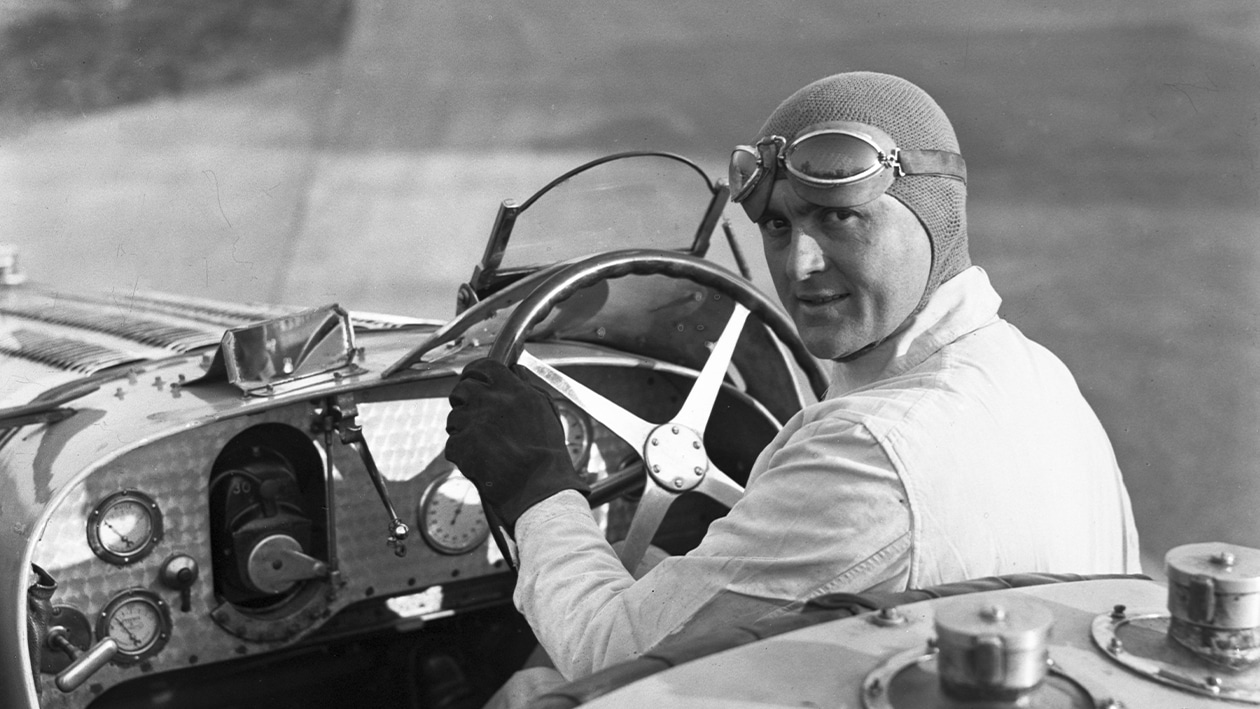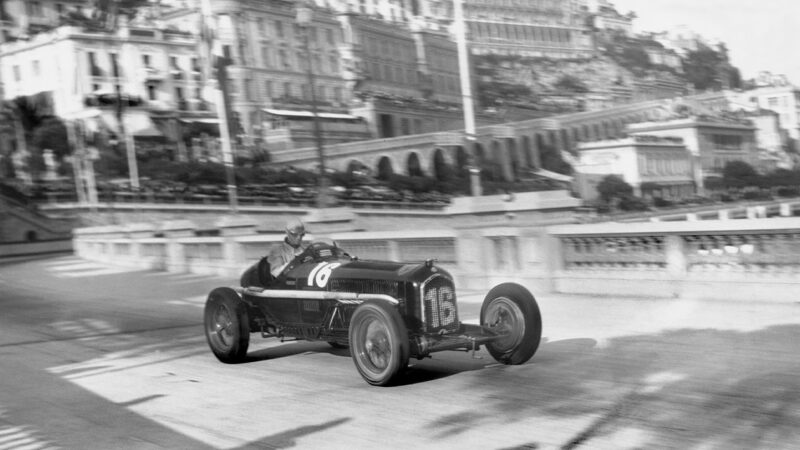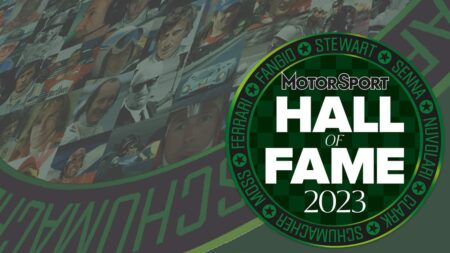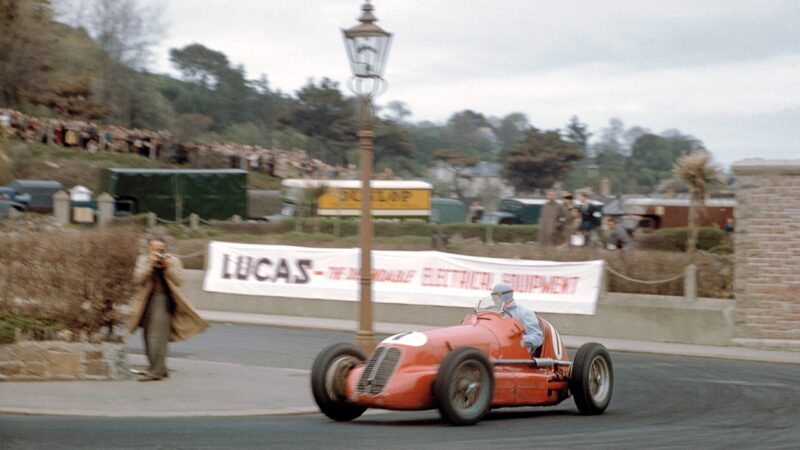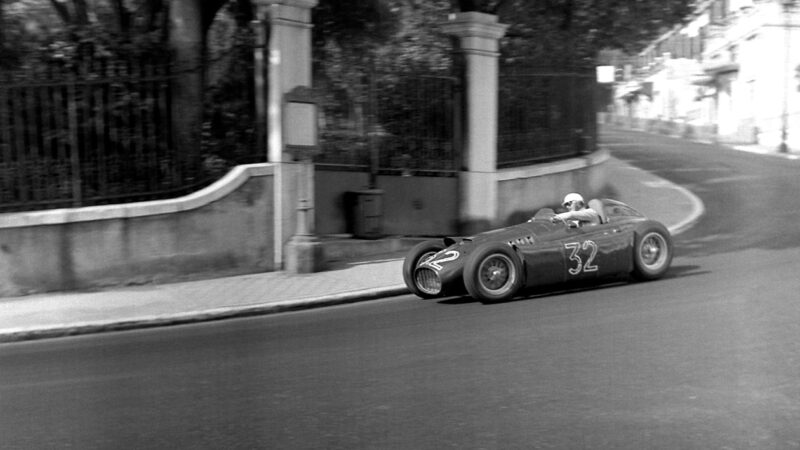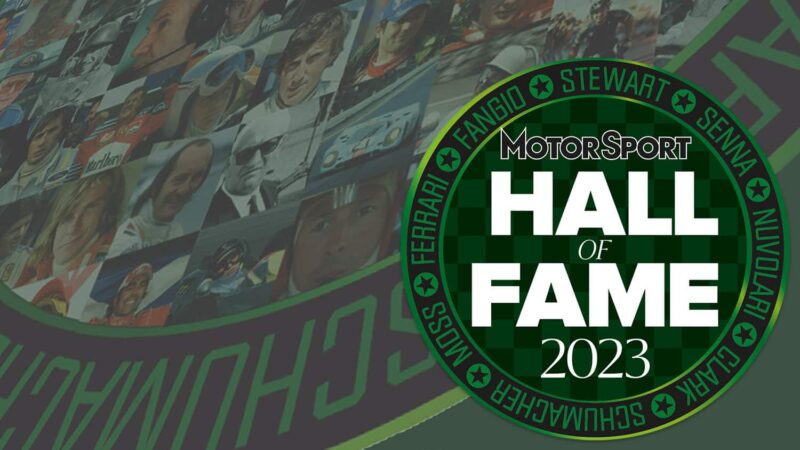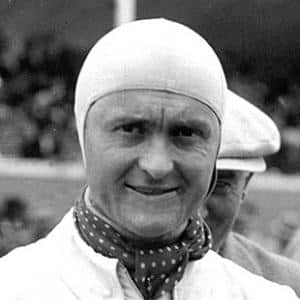But by no means had Chiron’s skill and ability to command championship stature diminished, and his smooth driving style had definitely emerged. At Monaco, over the difficult street circuit, he led for most of the 100 laps in his 2-litre Bugatti and was just seconds behind the 2.3-litre Bugatti of Drefus at the flag, earning him a Roy Nockolds drawing in Motor Sport. Another great duel. I can only think that Chiron and Bouriat were given works T35C 2-litre cars in a hope of a class as well as an outright win, the class idea being abandoned on race day.
He went on that year (1930) to win the European GP over the tortuous Spa course from team-mates Bouriat and Divo. Before the race Bugatti had decided the finishing order. The Bugattis dominated the race but Chiron had to change plugs, so Bouriat passed him, but obeying team orders he stopped just before the finishing line for over a minute, to allow the chosen driver to win; the crowd audibly displayed their annoyance! This is another of those ‘nothing new’ episodes, when one remembers the recent Coulthard/Hakkinen agreement that ‘who is first out of the first corner wins’, and is an example of how a team has the right to decide the finishing order of the drivers, as Ferrari did before Schumacher’s crash.
Chiron shared a Bugatti in the 24-hour Spa sportscar race, partnered by Bouriat; the car was hastily prepared and Ettore did not want it to run but Chiron insisted that he wished to experience the Spa circuit before the European GP. In the event he was delayed when the dynamo belt broke while leading. Bouriat drove almost as fast as the master but the belt broke again and they retired lightless. But it was not in vain and, with his research duly completed, Chiron won the Spa GP for Bugatti team, and was second in the Royal Grand Prix of Rome, beaten only by Luigi Arcangeli in one of the now challenging new 2.5-litre Maseratis, almost locked together on the last lap, the sort of finish we would like to see in F1 today! Chiron also cleaned up the 1930 Lyon GP for Bugatti.
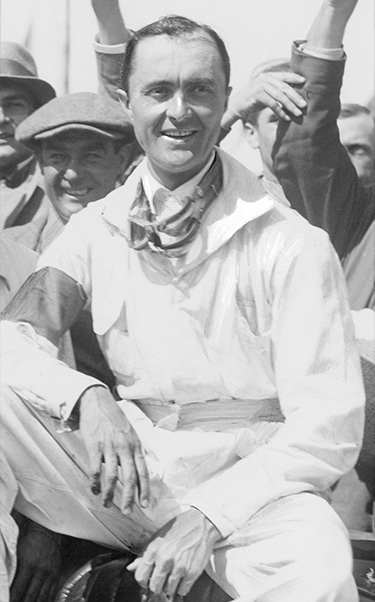
Chiron in 1934
Klemantaski Collection/Getty Images
Grand Prix racing had hotted-up even more by 1931. Alfa Romeo had the Monzas and the new P3 monopostos, Maserati their new 8C-2500 cars, and Bugatti the twin-cam 2.3-litre Type 51s with engines said to be copied from the two Indy Millers. At Monaco Chiron, always debonaire, sunburned round face under cloth helmet, drove as impeccably as ever, relaxed in style, and had a lead of nearly a lap at half-distance, winning comfortably from Fagioli’s Maserati, to the delight of the Monagasques.
Rivals Chiron and Varzi then shared a T51 for the ten-hour Italian GP but went out with a broken back axle ballrace. It would be unthinkable if Chiron had not driven at Le Mans. In 1931 he was one of the team driving the difficult blown 4.9-litre Type 50 Bugattis, but after a burst tyre resulted in a crash which killed a spectator they were withdrawn.
The 1931 Monza GP was run in heats and a final. Chiron again had one of the 4.9-litre T49 Bugattis but a flung tyre tread damaged a brake cable, and with the crowds invading the course he was flagged in, seventh. Spectators had been killed after occupying a forbidden area – one does not care to remember how often this happened in pre-war races… Chiron was second to Nuvolari in the Coppa Ciano. Finally he won at Masaryk and also won the Lyons GP, once more vanquishing the German opposition in the form of von Stuck’s Mercedes. He had shared a Bugatti with Varzi in the Belgian GP and his fitness was displayed when after leading Nuvolari he sprinted 2 1/2 miles to the pits and back, trying unsuccessfully to fix a sheared magneto-drive.
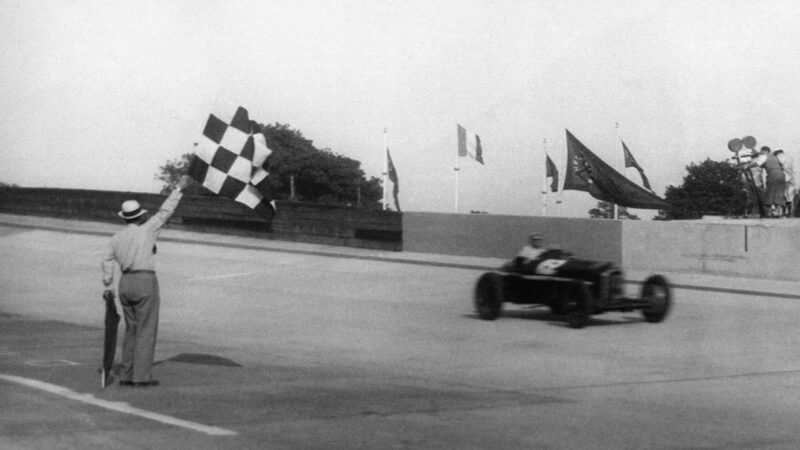
Chiron’s greatest moment came in 1934 French Grand Prix where his outdated, under-powered Alfa P3 beat the Auto Union and Mercedes teams
Keystone-France/Gamma-Rapho via Getty
He had tamed the exciting 16-cylinder T47 Bugatti with FWD in the Klausen, and in 1932 won three GPs in the Type 51. At Monaco he made a rare error when he had a lead on Nuvolari, through clipping a sandbag at Quai de Plaisance corner, the car overturning and throwing him out cut and bruised. But, applauded by the crowd wherever he led, Chimn/Varzi were third to the Alfas in the 23rd Targa Florio. Chiron could do nothing about the P3 Alfas in the French GP although reaching 130 mph along route nationale 31, finishing only fourth. He won at Dieppe, third in the Coppa Acerbo, beaten only by the Alfas of Nuvolari and Borzacchini and finished ahead of Sommer in the Nice Formula Libre race. He won again at Masaryk, from Fagioli and Nuvolari, was let down by his Bugatti at Le Mans but made FTD at La Turbie in the unpredictable Type 53 4WD Bugatti.
